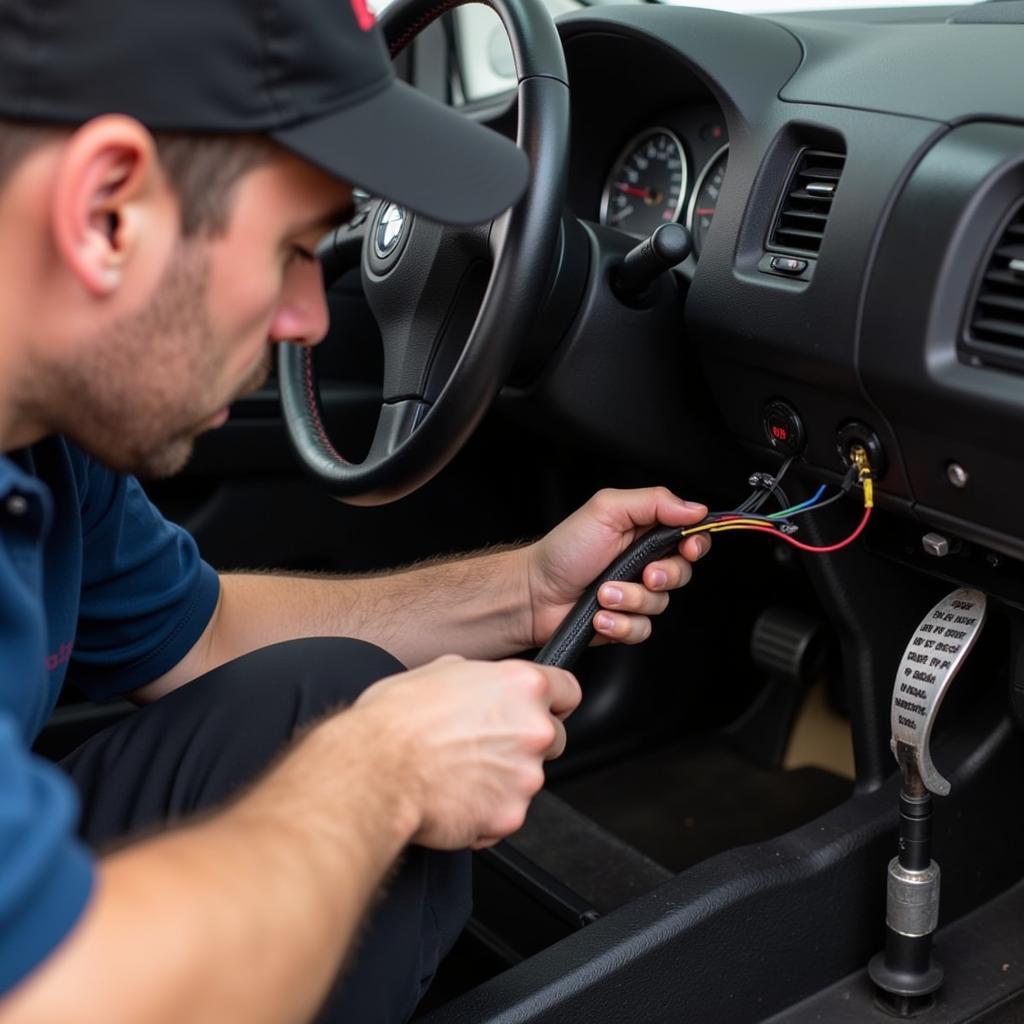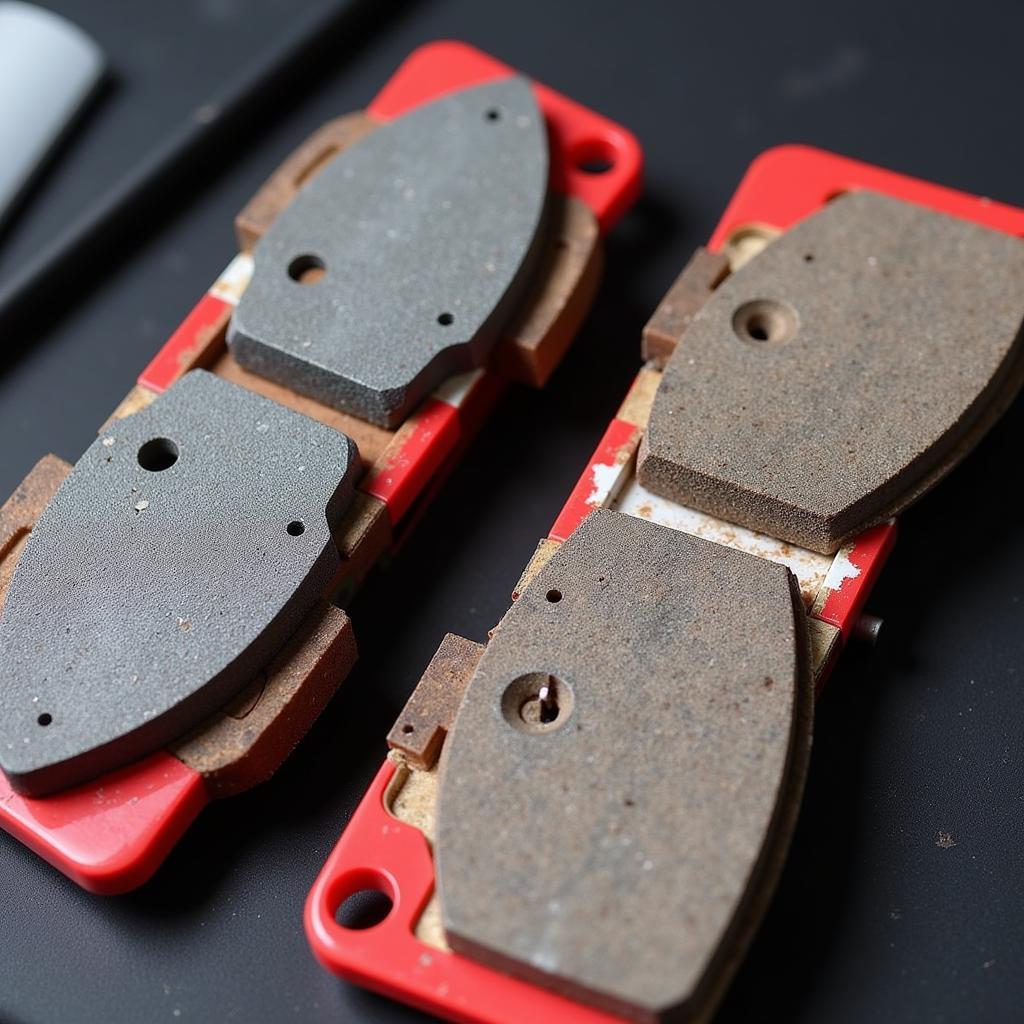An amp draw on your car battery can be a frustrating experience, leaving you stranded with a dead battery. Understanding what causes excessive amp draw is crucial to preventing future issues. amp draw on car battery refers to the amount of current being drawn from your battery when the car is off, and a high amp draw can drain your battery overnight. This article explores the causes, symptoms, and solutions for an excessive amp draw on your battery.
Understanding Amp Draw
A small amount of amp draw is normal even when your car is off, powering essential systems like the clock, radio memory, and security system. This acceptable amp draw on car battery is typically very low, around 50 milliamps or less. However, when this draw exceeds the normal range, it becomes a problem.
A common culprit is a faulty component or accessory that continues to draw power even after the car is off. This can range from a malfunctioning interior light to a more complex issue like a short circuit in the wiring. Identifying the source of this parasitic amp draw is key to resolving the battery drain.
How to Diagnose an Excessive Amp Draw
Suspecting an excessive amp draw? Here’s how to diagnose the issue:
- Gather your tools: You’ll need a multimeter and potentially a test light.
- Prepare your vehicle: Turn off all accessories, lights, and the ignition.
- Disconnect the negative battery cable: This isolates the battery from the vehicle’s electrical system.
- Connect the multimeter: Connect the multimeter in series between the negative battery terminal and the negative battery cable.
- Observe the reading: A reading higher than 50 milliamps suggests an excessive amp draw.
Common Causes of High Amp Draw
Several components can contribute to a high amp draw. These include:
- Interior lights: A faulty switch or door latch can prevent interior lights from turning off completely.
- Faulty alternator: A failing alternator can draw power even when the car is off.
- Stereo system: Aftermarket stereo installations can sometimes cause a parasitic draw if not wired correctly.
- Alarm system: Malfunctions in the alarm system can lead to increased power consumption.
- Gloves and trunk lights: Similar to interior lights, these can stay on due to faulty switches or wiring.
Finding the Source of the Drain
Once you’ve confirmed an excessive normal amperage draw car battery, you need to pinpoint the culprit. One method is to systematically remove fuses one by one while monitoring the multimeter reading. A significant drop in the reading indicates the circuit containing the faulty component.
“A systematic approach is key when diagnosing an amp draw,” says automotive electrical expert, John Miller. “Pulling fuses one at a time allows you to isolate the problematic circuit quickly and efficiently.”
Solutions for Excessive Amp Draw
Once the faulty component is identified, the solution will depend on the specific issue. This could involve:
- Replacing a faulty switch or relay.
- Repairing or replacing damaged wiring.
- Disconnecting or replacing the faulty component entirely.
What is the Maximum Amp Draw on a Car Battery?
The max amp draw on car battery will vary depending on the battery’s capacity. However, any draw significantly above 50 milliamps when the car is off is cause for concern.
“Remember, even a small, continuous draw can drain your battery over time,” adds electrical systems specialist, Sarah Chen. “Addressing the issue promptly can save you the headache of a dead battery.”
Conclusion
Dealing with an amp draw on your battery can be challenging, but by understanding the causes and following the diagnostic steps outlined above, you can identify and resolve the problem effectively. Addressing the issue promptly will prevent future battery drain and ensure your vehicle starts reliably every time. Don’t let an amp draw leave you stranded.
FAQ
-
What is a normal amp draw on a car battery? Typically, a healthy car battery should have an amp draw of 50 milliamps or less when the car is off.
-
How do I test for an amp draw? Use a multimeter connected in series between the negative battery terminal and the negative battery cable.
-
What are common causes of a high amp draw? Faulty interior lights, a bad alternator, aftermarket stereo systems, and alarm system malfunctions are common culprits.
-
How do I find the source of the amp draw? Systematically remove fuses one by one while monitoring the multimeter reading. A significant drop in the reading indicates the problematic circuit.
-
What should I do if my amp draw is too high? Repair or replace the faulty component or wiring causing the excessive drain.
-
Can a small amp draw drain my battery? Yes, even a small, continuous draw can deplete your battery over time.
-
What tools do I need to test for an amp draw? You will need a multimeter, and possibly a test light.


